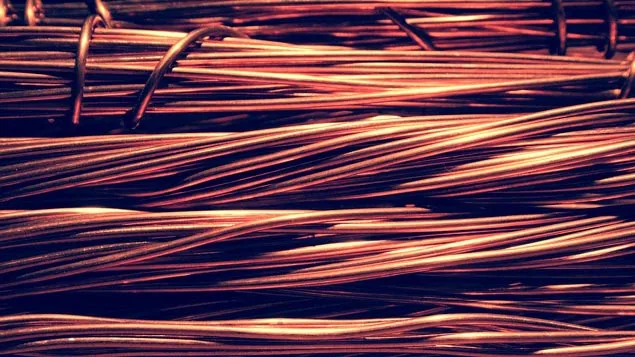Copper: The shield against COVID
- Copy
From being part of our modern smartphones to nearly every electrical appliance we use, copper has now acquired an extra-special place thanks to its unique pathogen-resistant capabilities. Hindalco’s Birla Copper brand is indispensable in several aspects of our lives – from our household gadgets to new-age smartphones to railway electrification. And now, the oldest metal known to humankind is proving to be a powerful tool in the fight against COVID-19.
Copper, a base metal that has been around for nearly 10,000 years, has emerged as a hot new candidate in the global war against the novel coronavirus. This malleable and ductile metal, known for its high thermal and electrical conducting properties, is found in natural ore deposits around the world. Its presence, though hardly seen, is much more ubiquitous in our lives than we think – from powering electrical motors to being part of our household plumbing, air-conditioning and water purification systems, there is a wide range of applications that depend upon copper in some form or the other.
Its presence in our daily lives is perhaps most common as an electrical conductor in integrated circuits and on printed circuit boards (PCBs) found inside practically any electrical gadget, modern appliance, tool or vehicle in use today. Telecommunication networks still depend upon copper for vital last-mile linkages, despite the growing shift to fibre optic cables. From older telephones to the new-age and highly advanced smartphones of today, we cannot imagine the digital world we live in without copper.
The modern smartphone typically contains around 16gm of copper
This makes it one of the most versatile and in-demand base metals across the consumer electronics, automotive, building and construction, industrial machines and power transmission and distribution sectors, and that’s not counting it all. Copper’s unique qualities and characteristics have progressively made it a metal of choice in practically every aspect of human life.

Qualities, rediscovered
Science has only recently woken up to some of its anti-infective properties, even though copper has always been highly regarded since ancient times for its health benefits. The first recorded use of copper as an infection-killing agent comes from Smith's Papyrus, the oldest-known medical document in history.
Around 1600 BCE, the Chinese used copper coins as medication to treat heart and stomach pain, and bladder diseases
(source: Smithsonian magazine)
Ayurvedic scriptures recommend drinking water stored overnight in copper vessels as it is considered beneficial for the digestive system. This water acquires detoxifying, anti-inflammatory and anti-ageing properties that have been known for centuries to many ancient civilisations around the world.
Of late, research findings about its ability to neutralise the novel coronavirus effectively have brought copper into the centre stage of scientific and public discourse around the pandemic. It’s proven now that copper ions rapidly destroy and render pathogens ineffective, and the best part is that these powerful anti-microbial properties of copper don’t fade away with age and time. What’s more, copper’s ability to ward of bacteria and viruses is even more potent than other heavy metals like gold and silver. These innate properties make it a powerful ally for countries in their fight against COVID-19.
According to a scientific research study published in the New England Journal of Medicine in March, 2020, SARS-CoV-2, the virus strain responsible for COVID-19, has been observed to be active on copper surfaces for up to four hours only, compared with two to three days on stainless steel and plastic, while retaining its infectious nature on cardboard surfaces for up to 24 hours.
Not surprisingly, the interest in copper has gone up exponentially during the past few months as consumers, businesses and governments find its anti-viral, anti-bacterial and anti-fungal properties to be a new opportunity to integrate the metal into everyday use.
Finding new applications
Much before COVID-19 struck, Chile led the efforts to study and expand the uses of copper on surfaces and inside products such as baby clothing, shoes, cosmetics, sleeping bags, bed sheets, detergents and paint, to tap into its anti-microbial benefits.
The country, which produces nearly a third of global copper output, has evolved into a copper innovation hub of sorts. Chile has been deploying the metal in many areas, especially in public transport systems and other public buildings and spaces where objects such as handrails, doorknobs, push plates, and hospital beds are getting copper surface coatings to make them safer. The use of copper nanoparticles is also catching up as some companies are using these in face masks and hand and industrial sanitisers.
In India, Hindalco is at the forefront of copper processing. Its copper division, Birla Copper, operates one of the largest single location, custom copper smelters in the world at Dahej, in Gujarat, on India’s western coast, with a processing capacity of 500,000 tonnes per annum.
Birla Copper is an ISO 9001, 14001, 27001, 50001 and OHSAS 18001 certified company, registered on the London Metal Exchange as Grade-A copper brand. Its brands, Birla Copper and Birla Copper II, are recognised for their high purity and consistent quality in the domestic as well as global markets.
The company produces LME grade copper cathodes, continuous cast copper rods in various sizes, and precious metals like gold and silver. Birla Copper is a major manufacturer of 19.6mm diameter copper rods, used in railway electrification projects across India.
With the nation reeling under the health and social impact of the pandemic, Birla Copper is committed to innovating and finding new ways to leverage the unique qualities of copper towards addressing the safety concerns posed by COVID-19.

















